Ilya Repin (Илья Ефимович Репин) (1844-1930)
Get a Repin Certificate of Authenticity for your painting or a COA for your Repin drawing or sculpture.
For all your Repin artworks you need a Certificate of Authenticity in order to sell, to insure or to donate for a tax deduction.
How to get a Repin Certificate of Authenticity is easy. Just send us photos and dimensions and tell us what you know about the origin or history of your Repin painting, drawing or sculpture.
If you want to sell your Repin painting, drawing or sculpture use our selling services. We offer Repin selling help, selling advice, private treaty sales and full brokerage.
We have been authenticating Repin and issuing certificates of authenticity since 2002. We are recognized Repin experts and Repin certified appraisers. We issue COAs and appraisals for all Repin artworks.
Our Repin paintings, drawings and sculptures authentications are accepted and respected worldwide.
Each COA is backed by in-depth research and analysis authentication reports.
The Repincertificates of authenticity we issue are based on solid, reliable and fully referenced art investigations, authentication research, analytical work and forensicstudies.
We are available to examine your Repin painting, drawing or sculpture anywhere in the world.
You will generally receive your certificates of authenticity and authentication report within two weeks. Some complicated cases with difficult to research Repin paintings, drawings or sculpture take longer.
Our clients include Repin collectors, investors, tax authorities, insurance adjusters, appraisers, valuers, auctioneers, Federal agencies and many law firms.
We perform Ilya Repin art authentication, appraisal, certificates of authenticity (COA), analysis, research, scientific tests, full art authentications. We will help you sell your Ilya Repin or we will sell it for you.
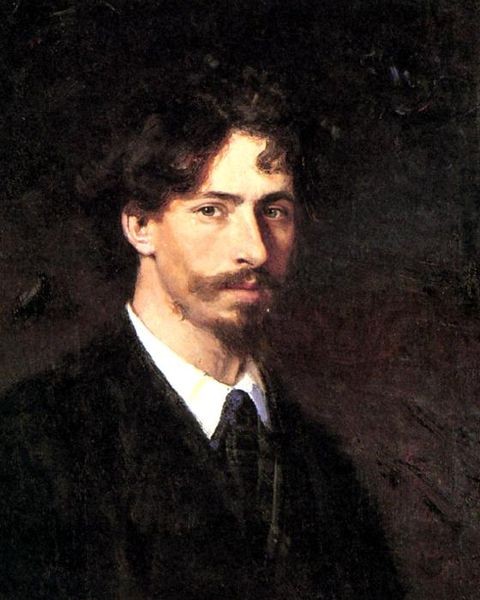
Ilya Repin was a leading Russian painter and sculptor of the Peredvizhniki artistic school. His realistic works often expressed great psychological depth and exposed the tensions within the existing social order. Beginning in the latter-1920s, detailed works on him were being published in the USSR and about a decade later, a Repin cult was established in the Soviet Union and he was being held up as a model “progressive” and “realist” to be imitated by “Socialist Realist” artists in the USSR.

Repin was born in the town of Chuguev near Kharkov in the heart of the historical region called Sloboda Ukraine. His parents were Russian military settlers. In 1866, after apprenticeship with a local icon painter named Bunakov and preliminary study of portrait painting, he went to Saint Petersburg and was shortly admitted to the Imperial Academy of Arts as a student. From 1873 to 1876 on the Academy’s allowance, Repin sojourned in Italy and lived in Paris, where he was exposed to French impressionist painting, which had a lasting effect upon his use of light and colour. Nevertheless, his style was to remain closer to that of the old European masters, especially Rembrandt, and he never became an impressionist himself. Throughout his career, he was drawn to the common people from whom he himself traced his origins, and he frequently painted country folk, both Ukrainian and Russian, though in later years he also painted members of the Imperial Russian elite, the intelligentsia, and the aristocracy, including Tsar Nicholas II.
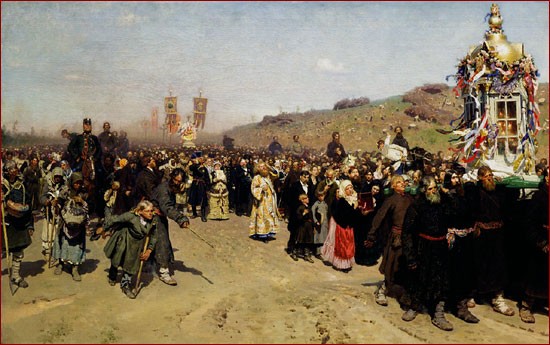
In 1878, Repin joined the free-thinking “Association of Peredvizhniki Artists”, generally called “the Wanderers” or “The Itinerants” in English, who, at about the time of Repin’s arrival in the capital, rebelled against the academic formalism of the official Academy. His fame was established by his painting of the “Volga Barge Haulers”, a work which portrayed the hard lot of these poor folk but which was not without hope for the youth of Russia. From 1882 he lived in Saint Petersburg but did visit his Ukrainian homeland and on occasion made tours abroad.
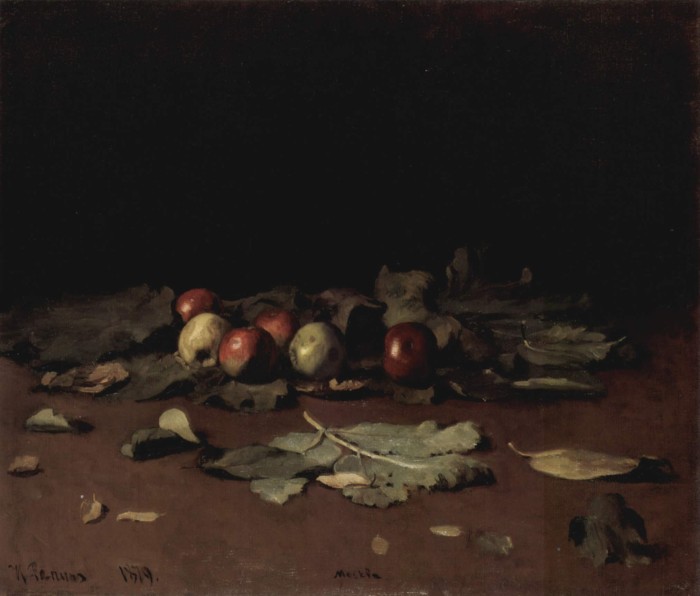
Beginning shortly before the assassination of Tsar Alexander II in 1881, he painted a series of pictures dealing with the theme of the Russian revolutionary movement: “Refusal to Confess”, “Arrest of a Propagandist”, “The Meeting”, and “They did not Expect Him”, the last of which is undoubtedly his masterpiece on the subject, mixing contrasting psychological moods and Russian and Ukrainian national motifs. His large-scale “Religious Procession in the Province of Kursk” is sometimes considered an archetype of the “Russian national style” displaying various social classes and the tensions among them set within the context of a traditional religious practice and united by a slow but relentless forward movement.
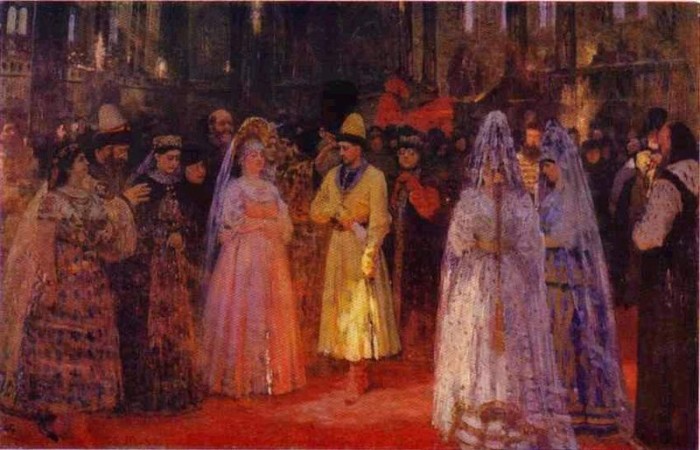
In 1885, Repin completed one of his most psychologically intense paintings, “Ivan the Terrible and his Son.” This canvas displayed a horrified Ivan embracing his dying son, whom he had just struck and mortally wounded in an uncontrolled fit of rage. The visage of terrified Ivan is in marked contrast with that of his calm, almost Christlike son.
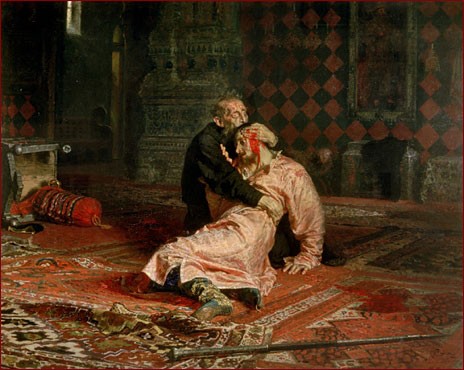
One of Repin’s most complex paintings, “The Reply of the Zaporozhian Cossacks to Sultan of Turkey” occupied many years of his life. He conceived this painting as a study in laughter, but also believed that it involved the ideals of liberty, equality, and fraternity; in short, Ukrainian Cossack republicanism. Begun in the late 1870s, it was only completed in 1891, and, ironically, was immediately purchased by the Tsar. The Tsar paid 35,000 rubles for the painting, an enormous amount for that time.
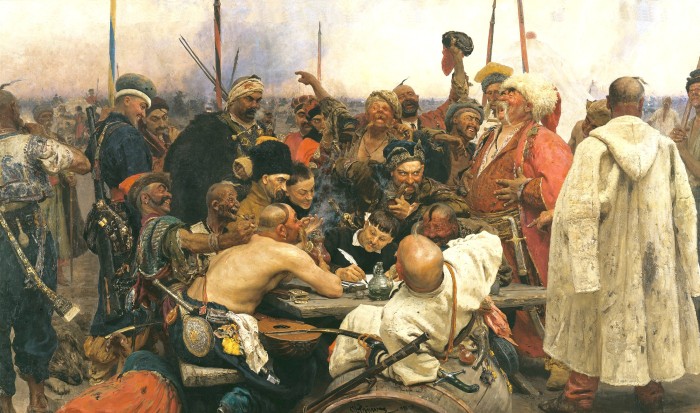
The Reply of the Zaporozhian Cossacks to Sultan Mehmed IV of Turkey 1880-1891
During his maturity, Repin painted many of his most celebrated compatriots, including the novelist Leo Tolstoy, the scientist Dmitri Mendeleev, the imperial official Pobedonostsev, the composer Mussorgsky, the philanthropist Pavel Tretyakov, and the Ukrainian poet and painter, Taras Shevchenko. In 1903 he was commissioned by the Russian government to paint his most grandiose design, a 400 x 877 cm canvas representing a ceremonial session of the State Council.
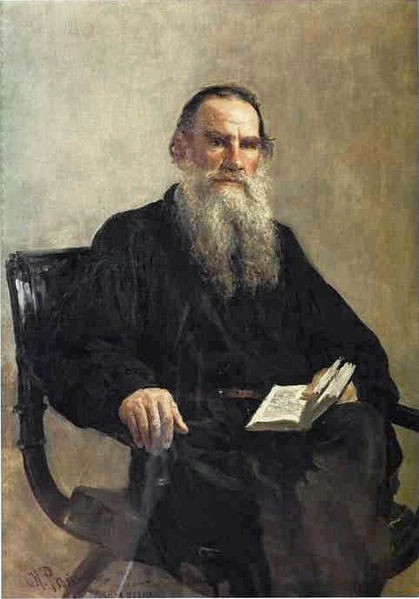
Repin himself designed his home Penaty (literally, “the Penates”) or the Roman “Household Gods”, located just to the north of Saint Petersburg. After the 1917 October Revolution, Penaty was incorporated into Finland. He was invited by various Soviet institutions to come back to his homeland but refused the invitation giving the excuse that he was too old to make the journey. During this period, Repin devoted much time to painting religious subjects, though his treatment of these was usually innovative and not traditional.

With the exception of a portrait of Provisional Government head, Alexander Kerensky, he never painted anything substantial on the subject of the 1917 revolutions or the Soviet experiment that followed. His last painting, a joyous and exuberant canvas called “The Hopak”, was on a Ukrainian Cossack theme. In 1930, he died in Kuokkala, Finland (now Repino, Leningrad Oblast). The Penates are part of the World Heritage Site Saint Petersburg and Related Groups of Monuments. In 1940, Penaty was opened for the public as a house museum. Alexander Glazunov’s Oriental Rhapsody, Op. 29 (1889) is dedicated to Ilya Repin.

Still wondering about a 19th century Russian painting in your family collection? Contact us…it could be by Ilya Repin.
Reviews
1,217 global ratings
5 Star
4 Star
3 Star
2 Star
1 Star
Your evaluation is very important to us. Thank you.
